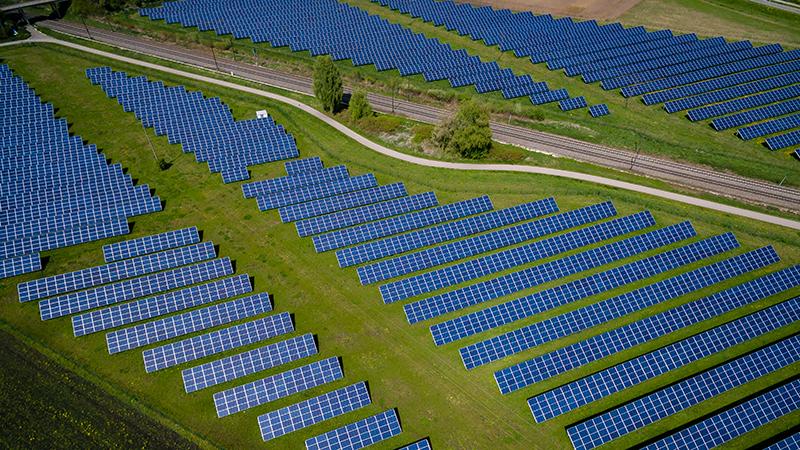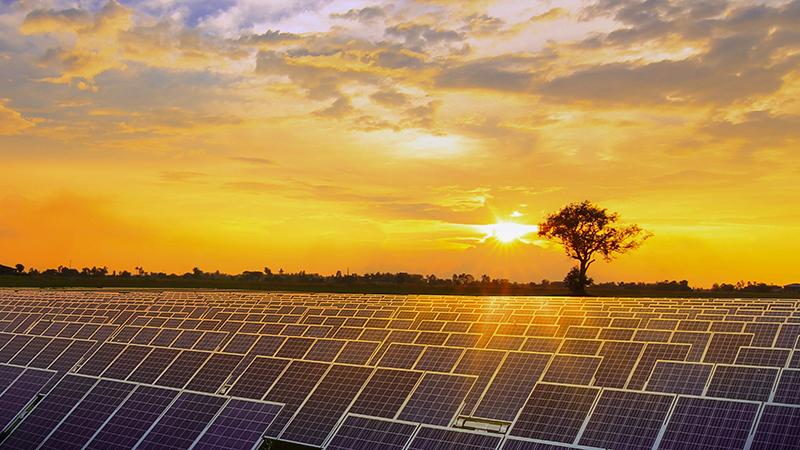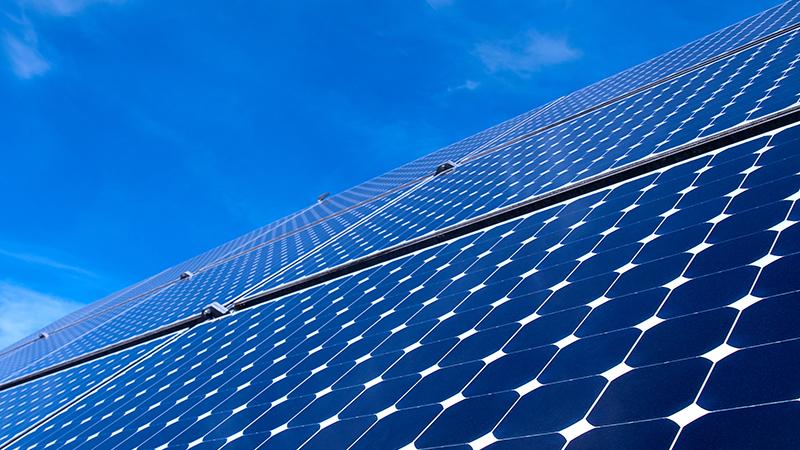Expert insights: Mastering the elements of effective solar resource assessments
Interview with Francesca MARTIN, Renewables Consultant, Solar Energy, RINA and Dounia ZIYATI, Solar Assessment Engineer, Doctor of Science Engineering, EDF Renouvelables.
Interview with Francesca MARTIN:
1. Could you tell about your experience/background in Renewable Energy industry and your current role in RINA?
With over five years of experience in the Renewable Energy sector, focusing on solar energy, I began my journey through internships at Power Capital and Feedgy. Dedicated to solar energy, I spent over three years as a Solar Assessment Engineer at EDF Renouvelables, involved in global solar projects with focus on conducting solar assessment studies, creating PV layouts, and evaluating the energy yield.
Now, as a Solar Consultant at RINA, I handle diverse technical due diligence tasks, including permits reviews, grid connection examinations, and contract revisions. My responsibilities also cover equipment evaluation, layout assessment, and OPEX estimation. Despite my broader scope, I regularly perform solar resource and yield studies for European projects.

Solar Energy, Rina
2. Why is solar resource assessment considered a crucial aspect of solar energy projects, and what factors influence the decision to conduct such assessments?
Solar resource assessment is deemed crucial in solar energy projects due to its significant impact on the project's overall performance and viability. We can say that solar resource assessment plays a fundamental role in the success of solar energy projects, providing critical data for optimal system design, risk mitigation and financial planning. The decision to conduct these assessments is influenced by a combination of regulatory requirements, financial considerations, investor demands, as well as the project’s stage and scale.
3. Can you provide insights into the recent exponential growth of solar energy and discuss the contributing factors? Additionally, with solar installations growing in size due to technological advancements, what challenges do you anticipate in optimizing the energy yield of these larger solar plants, and how important are accurate solar resource assessments in addressing these challenges?
The recent surge in solar energy growth is driven by technological advancements and reduced PV component costs. Supportive national policies, environmental awareness, and the quest for energy independence contribute to this trend. Optimizing larger solar plants poses challenges in grid integration, maintenance, and monitoring. Mitigating the impact of spatial weather variability is crucial to maintain consistent values of performance when the project covers areas with diverse weather conditions. Larger plants face a challenge in solar resource assessment, where accuracy is vital for performance predictions, risk mitigation, and precise financial models.
4. In the context of solar resource assessment, what meteorological parameters are typically evaluated, and how do they influence the feasibility of a solar power plant in a specific location?
The measurement of diverse solar variables is contingent upon the site's location and size, and the specifications for sensor quality and quantity may vary accordingly. Essential parameters that should systematically be measured include Global Horizontal Irradiance (GHI), Global Tilted Irradiance (GTI), Ambient Temperature, Cell Temperature, Wind Speed, Wind Direction, and Albedo for bifacial solar plants. The selection of sensors and their precision is influenced by the unique characteristics of each location and the specific requirements of the solar project.
By considering these meteorological parameters, developers can make informed decisions about the feasibility, design, and performance expectations of a solar power plant in a specific location. This comprehensive assessment is vital for successful project planning and execution.

5. In your role, you perform irradiance assessments and energy yield assessments. Can you walk us through the process of conducting these assessments and their significance in optimizing energy yield for solar power plants?
In RINA, our focus is on solar resource assessment to initiate the process. If ground or satellite data isn't provided by our clients, we examine multiple satellite databases using a weighted mean methodology. The solar resource assessment serves as an input for our energy yield assessment conducted using PVSyst software, with additional validations and post-processing. We tailor 3D modeling to the precision demands of the project, using various methods. For bifacial systems, we compare the outputs obtained by NREL's Radiance software with those generated by PVSyst. Irradiance and energy yield assessments are crucial for decision-making, risk management, financial planning, and ongoing performance monitoring in solar projects.
Interview with Dounia ZIYATI
1. Could you tell about your experience/background in Renewable Energy industry and your current role in EDF Renouvelables?
During my PhD at PROMES-CNRS, I explored integrating photovoltaic (PV) systems with concentrated solar power (CSP) plants for compact hybrid systems. Using THEMIS solar power plant as a case study, I assessed energy production and efficiency with on-site measurements and satellite databases. Promising results emerged, but financial costs and challenges were prohibitive.

Doctor of Science Engineering,
EDF Renouvelable
The climate change is underway and is forcing the world to make rapid changes. I couldn’t wait to see our system come into being and I knew I wanted to make a difference, which is why I decided to join EDF Renewables. I joined EDF Renewables as a solar assessment engineer, focusing on PV plant design, solar resource evaluation, and energy yield assessment. I also serve as a referee on PV modules, solar instrumentation, and solar resource within my team. Witnessing the synergy between these fields, I appreciate the progress in PV driven by dedicated individuals working towards a better tomorrow.
2. How have you seen the industry evolve over the years, particularly in terms of solar resource assessment?
In response to rapid changes in the field, solar resource assessments have evolved. Initially focused on monofacial PV modules in large-scale plants, the emphasis was on ensuring high-quality solar data, especially Global Horizontal Irradiation (GHI). The adoption of bifacial modules expanded the scope, consideration of various elements for this technology, such as albedo. Hybrid plants, like those combining different technologies, necessitated adjustments in solar resource data resolution, considering factors like lower temporal resolution in wind farms and PV plants integrated with battery energy storage systems (BESS).
3. Can you elaborate on the advantages and limitations of on-site ground measurement campaigns and satellite data analysis in solar assessment? How do these methods influence energy yield assessments, and in what scenarios are they typically employed?
On-site ground measurements provide the highest accuracy if properly maintained. While satellite databases and historical meteorological data (20 to 25 years) is improving, their accuracy depends on geographical coverage and theoretical models. Project-specific needs determine the level of detail, with early stages possibly relying on satellite databases. However, anticipating on-site data campaigns is preferable for long-term reference, considering year-to-year variability, climate change, and natural disasters.
4. Can you provide insights into the technologies and sensors commonly involved in solar resource assessment, and elaborate on the required performance criteria for sensors/measurement systems to ensure a successful resource assessment campaign?
The class type of the sensor, and always favor the use of numerical datalogger over analogical, carry out long term campaign to ensure correct interpretation of results, at least one year to cover the entire season, visualize data at least once a month to ensure that it doesn’t accumulate without end use, and if possible, anticipate the need for an on-site station if the level of uncertainty is quite important for a given location.
5. With the increasing importance of accurate solar resource assessment, how do you see the role of technology evolving in this field, and what innovations are you excited about?
I think that both on the instrumental and satellite sectors are undergoing huge changes to adapt to our needs. The first example that comes to mind is the need to predict solar resource when combining different technologies, through forecast for example. Predicting solar resource with a high level of accuracy is one of the things I’m looking forward to, just as well as all the changes in the models used in satellite databases that shows the commitment of different companies to improve the quality of their data.


Add new comment